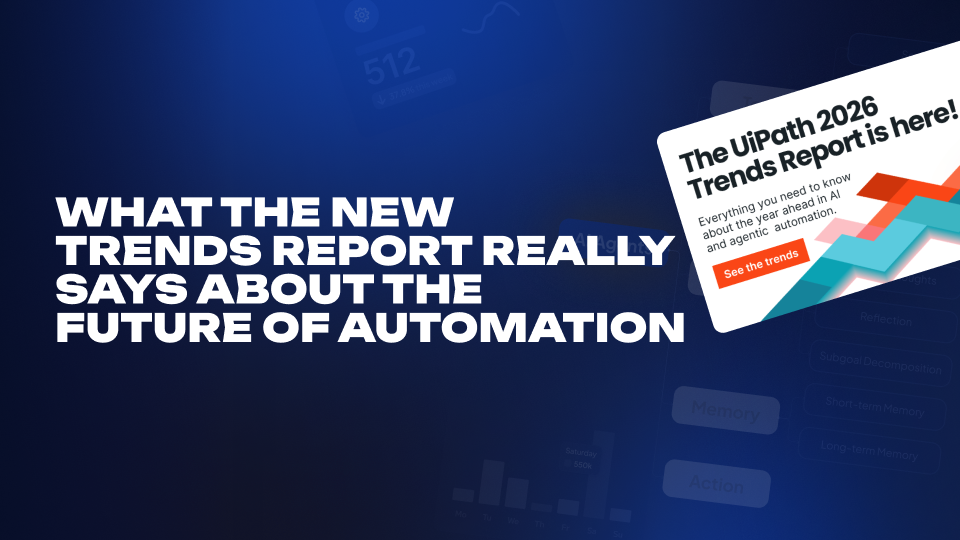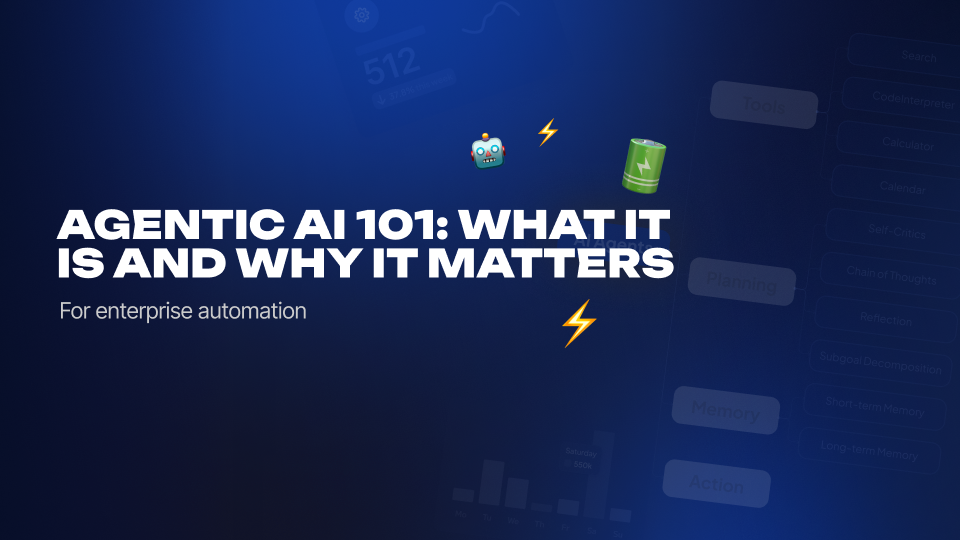
What the new UiPath trends report really says about the future of automation
Everyone is racing to deploy AI agents, build multi-agent systems, redesign processes, and talk about “agentic enterprises.” And honestly? The excitement is justified.
The UiPath Trends 2026 report shows just how quickly this shift is accelerating: 75% of companies are planning to deploy MAS (multi-agent systems) within the next 18 months.
The capability leap is real. What these agents can do is genuinely impressive. But the more you read between the lines, the more obvious it becomes: The technology isn’t the bottleneck – the operational environment often is.
The agent boom is happening faster than the infrastructure can catch up
The UiPath report highlights a very uncomfortable, very important truth: organizations are adopting agents faster than they are building the structures required to manage them.
There’s a huge gap in:
- governance
- observability
- guardrails
- data quality and context
- agent orchestration
Companies launch an agent, maybe two, maybe four and suddenly the environment looks less like a modern automation program and more like a team meeting where everyone is talking at the same time and nobody bothered to bring an agenda.
One line in the report hit hard: ontology-enriched data increased LLM accuracy from 16% to 54%. If that doesn’t tell you how important structure and context are, nothing will.
The takeaway is pretty simple: Agents don’t fail because they’re not intelligent enough. They fail because the environment around them often isn’t prepared for autonomy.
Multi-agent systems are powerful – but only if someone is steering
The report is full of data proving MAS can deliver massive operational value:
- fewer errors
- faster execution
- lower service costs
- better routing
- smoother decision pipelines
But here’s the thing nobody likes to say out loud: multi-agent systems don’t scale themselves.
Someone has to provide the:
- structure
- constraints
- real-time visibility
- and the orchestration layer that makes sure independent decisions don’t collide
This is exactly the point where some of the traditional RPA operating models stop working. You can’t coordinate autonomous agents with the same frameworks you used for attended automations in 2019.
Where Pointee fits into this new landscape
This shift is exactly why Pointee’s direction changed this year.
We’re moving from orchestrating RPA to something much bigger which we will officially unveil very soon.
The goal isn’t to replace what teams already use. The goal is to give automation and AI leaders the operational layer they’re missing.
The UiPath report paints a clear picture, the agentic era is here, and it’s moving faster than most organizations expected.
But the companies that thrive won't be the ones deploying the most agents. They’ll be the ones who build the operational foundation that makes those agents productive, safe, predictable, and aligned.
2026 isn’t the year of AI hype. It’s the year AI gets organized and fully reliable.









